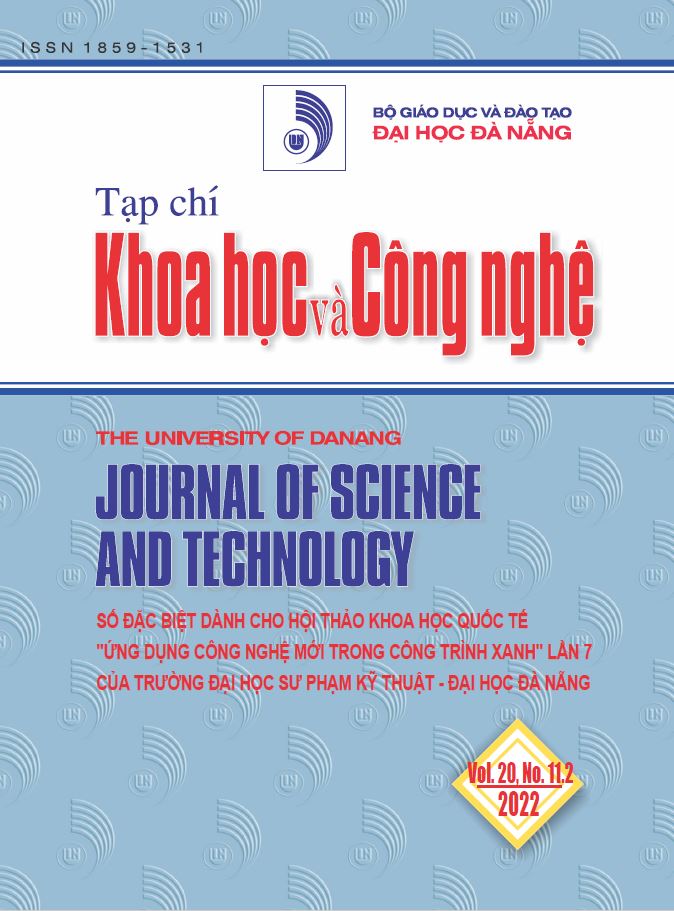Sàng lọc các dẫn xuất một lần thế của doxorubicin để phát triển thuốc điều trị ung thư vú bằng phương pháp tính toán hóa học
 Tóm tắt: 275
Tóm tắt: 275
 |
|  PDF: 126
PDF: 126 
##plugins.themes.academic_pro.article.main##
Author
-
Trần Thị Thu HồngTrường Đại học Sư phạm Kỹ thuật - Đại học Đà NẵngNguyễn Quang TrungTrường Đại học Sư phạm - Đại học Đà NẵngNguyễn Minh ThôngPhân hiệu Đại học Đà Nẵng tại Kon TumVõ Văn QuânTrường Đại học Sư phạm Kỹ thuật - Đại học Đà Nẵng
Từ khóa:
Tóm tắt
Doxorubicin (DBC) là một trong những loại thuốc phổ biến được sử dụng trong hoá trị liệu để điều trị một số loại bệnh ung thư có nguồn gốc từ vi sinh vật. Trong nghiên cứu này, 39 dẫn xuất một lần thế của DBC được sàng lọc để tìm các dẫn xuất tiềm năng sử dụng làm thuốc điều trị bệnh ung thư thông qua mô hình tính toán lý thuyết, kỹ thuật docking phân tử, dự đoán các tính chất dược động học (ADME). Kết quả cho thấy, các dẫn xuất 1-C2H-DBC, 2-C2H-DBC và 2-F-DBC có năng lượng tương tác tương đối tốt với các enzyme ERα, Aromatase, CCL18 và PR. Đặc điểm tương tác giữa các dẫn xuất này và protein mục tiêu cũng tương đồng với chất chuẩn đối chiếu được sử dụng là DBC. Bên cạnh các thông số dược động học ADME, chỉ số druglikeness, drugscore của các dẫn xuất này cũng được so sánh với chất chuẩn đối chiếu. Các chỉ số này đều tương đương với DBC, hứa hẹn tiềm năng của chúng trong việc sử dụng để điều trị bệnh ung thư tương tự DBC.
Tài liệu tham khảo
-
[1] Lachenmayer Anja, et al., "Molecular approaches to treatment of hepatocellular carcinoma", Digestive and Liver Disease, 42, 2010, S264-S272.
[2] Newman David J and Gordon M Cragg, "Natural products as sources of new drugs over the last 25 years", Journal of natural products, 70, 2007, 461-477.
[3] Forrest Robert A, et al., "The hydroxyl epimer of doxorubicin controls the rate of formation of cytotoxic anthracycline-DNA adducts", Cancer chemotherapy and pharmacology, 71, 2013, 809-816.
[4] Tevyashova AN, et al., "New conjugates of antitumor antibiotic doxorubicin with water-soluble galactomannan: Synthesis and biological activity", Russian journal of bioorganic chemistry, 33, 2007, 139-145.
[5] Loan Trần Thị Hồng and Nguyễn Minh Hiền, "Hợp chất thiên nhiên trong hóa trị ung thư", Vietnam journal of Science, 2, 2017, 133-140.
[6] Baindara Piyush and Santi M Mandal, "Bacteria and bacterial anticancer agents as a promising alternative for cancer therapeutics", Biochimie, 177, 2020, 164-189.
[7] Cagel Maximiliano, et al., "Doxorubicin: nanotechnological overviews from bench to bedside", Drug discovery today, 22, 2017, 270-281.
[8] Abraham Sheela A, et al., The liposomal formulation of doxorubicin, in Methods in enzymology. 2005, Elsevier. p. 71-97.
[9] Agrawal K, In xPharm: The Comprehensive Pharmacology Reference, 2007, Elsevier Inc.: New York, NY, USA.
[10] Carvalho Cristina, et al., "Doxorubicin: the good, the bad and the ugly effect", Current medicinal chemistry, 16, 2009, 3267-3285.
[11] Hussain Mona A, et al., "Antioxidant and anti-inflammatory effects of crocin ameliorate doxorubicin-induced nephrotoxicity in rats", Oxidative Medicine and Cellular Longevity, Volume 2021, Article ID 8841726, https://doi.org/10.1155/2021/8841726
[12] Tacar Oktay, Pornsak Sriamornsak and Crispin R Dass, "Doxorubicin: an update on anticancer molecular action, toxicity and novel drug delivery systems", Journal of pharmacy and pharmacology, 65, 2013, 157-170.
[13] Hilmer Sarah N, et al., "The hepatic pharmacokinetics of doxorubicin and liposomal doxorubicin", Drug metabolism and disposition, 32, 2004, 794-799.
[14] Nisha Chaluveelaveedu Murleedharan, et al., "Docking and ADMET prediction of few GSK-3 inhibitors divulges 6-bromoindirubin-3-oxime as a potential inhibitor", Journal of Molecular Graphics and Modelling, 65, 2016, 100-107.
[15] Yadav Dharmendra K, et al., "Molecular docking, QSAR and ADMET studies of withanolide analogs against breast cancer", Drug Design, Development and Therapy, 11, 2017, 1859.
[16] Alam Sarfaraz and Feroz Khan, "QSAR, docking, ADMET, and system pharmacology studies on tormentic acid derivatives for anticancer activity", Journal of Biomolecular Structure and Dynamics, 36, 2018, 2373-2390.
[17] Saba Afsheen, et al., "Insighting the Inhibitory Potential of Novel Modafinil Drug Derivatives Against Estrogen Alpha (ERα) of Breast Cancer Through a Triple Hybrid Computational Methodology", Journal of molecular liquids, Volume 366, 2022, 120234.
[18] Morris Garrett M, et al., "AutoDock4 and AutoDockTools4: Automated docking with selective receptor flexibility", Journal of computational chemistry, 30, 2009, 2785-2791.
[19] Trott Oleg and Arthur J Olson, "AutoDock Vina: improving the speed and accuracy of docking with a new scoring function, efficient optimization, and multithreading", Journal of computational chemistry, 31, 2010, 455-461.
[20] Zhang Wenzhu, et al., "Research progress on RNA‑binding proteins in breast cancer", Oncology Letters, 23, 2022, 1-14.
[21] Acharya Reetuparna, et al., "Structure based multitargeted molecular docking analysis of selected furanocoumarins against breast cancer", Scientific reports, 9, 2019, 1-13.
[22] Wang Limin, Kathleen A Gallo and Susan E Conrad, "Targeting mixed lineage kinases in ER-positive breast cancer cells leads to G2/M cell cycle arrest and apoptosis", Oncotarget, 4, 2013, 1158-1171.
[23] BIOVIA Dassault Systèmes, "Discovery Studio Modeling Environment Release 4.5, Dassault Systemes", San Diego, 2015,
[24] Xiong Guoli, et al., "ADMETlab 2.0: an integrated online platform for accurate and comprehensive predictions of ADMET properties", Nucleic Acids Research, 49, 2021, W5-W14.
[25] Hehre WJ, et al., "Spartan Software. Wavefunction", Inc., Irvine, 2000.



